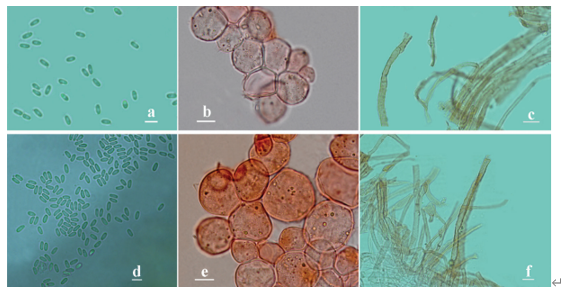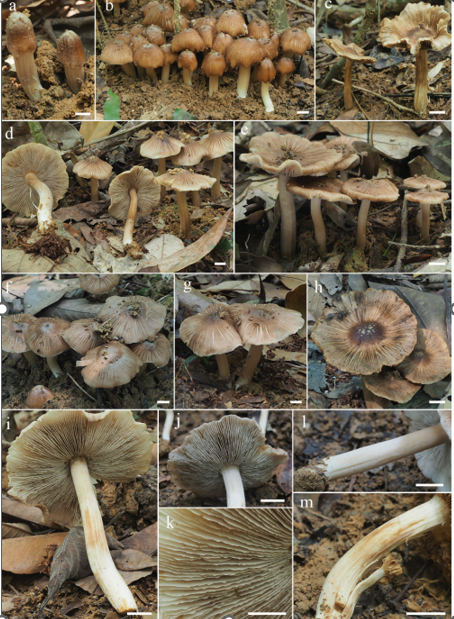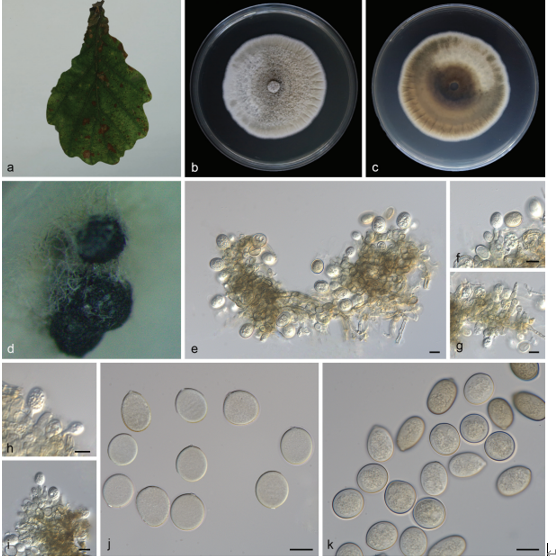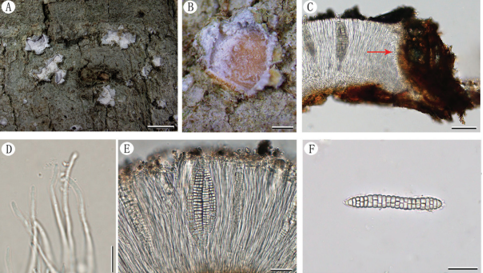Tomentella griseofusca H.S. Yuan & Y.C. Dai 2020
Index Fungorum number: IF555701; Facesoffungi number: FoF 05627
Holotype: CHINA, Liaoning Province, Xifeng County, Binglashan National Forest Park, on rotten angiosperm branch, 2 August 2016, Yuan 11094 (IFP 019293, holotype); on rotten angiosperm wood debris, 2 August 2016, Yuan 11104 (IFP 019294) & 11105.
Morphological description
Basidiocarps annual, resupinate, adherent to the substrate, crustose, without odour or taste when fresh, 0.5–0.8 mm thick, continuous. Hymenophoral surface smooth, greyish brown to dark brown (7E4–7F4) and concolorous with subiculum when dry. Sterile margin often indeterminate, byssoid, concolorous with hymenophore. Rhizomorphs absent. Subicular hyphae monomitic; generative hyphae clamped, thick-walled, rarely branched, 5–6.5 μm diam, without encrustation, golden brown in KOH, cyanophilous, inamyloid. Subhymenial hyphae clamped, thick-walled, occasionally branched, 6–9 μm diam; hyphal cells short and occasionally inflated, golden brown in KOH, cyanophilous, inamyloid. Cystidia absent. Basidia 35–55 μm long and 6–12 μm diam at apex, 5–9 μm at base, with a clamp connection at base, utriform, not stalked, not sinuous, without transverse septa, golden brown in KOH, golden brown in distilled water, 4-sterigmate; sterigmata 4–7 μm long and 1.5–2.5 μm diam at base. Basidiospores slightly thick-walled, (8–)8.2– 9.1(–9.5) × (7–)7.4–8.8(–9) μm, L = 8.60 μm, W = 8.21 μm, Q = 1.03–1.18 (n = 60/2), globose to subglobose in frontal and lateral views, aculeate, brownish yellow in KOH, brownish yellow in distilled water, cyanophilous, inamyloid; echinuli isolated, up to 2.5 μm.
Habitat: On rotten angiosperm branch.
Distribution: In China.
GenBank Accession: ITS: KY686252, KY686253; LSU: MK446380, MK446381.
Notes: Tomentella griseoumbrina Litsch. resembles T. griseofusca by having continuous basidiocarps adherent to the substrate with a smooth hymenophore, the absence of rhizomorphs, clamped hyphae without encrustations and globose to subglobose basidiospores. However, it differs from T. griseofusca by having pale brown basidiocarps and smaller basidiospores with short echinuli (4.5–5.5 μm, Kõljalg 1996). T. beaverae Suvi & Kõljalg is similar to T. griseofusca by having continuous, greyish brown basidiocarps adherent to the substrate with a byssoid sterile margin, clamped, thick-walled subicular hphae, the absence of cystidia, and short, inflated subhymenial hyphae. But, it differs in the presence of rhizomorphs, thick-walled subhymenial hyphae and smaller, ellipsoid or slightly triangular basidiospores (6.8–8.6 μm, Suvi et al. 2010).
Reference: Hai‑Sheng Yuan1,2· Xu Lu1,2 · Yu‑Cheng Dai3 ·
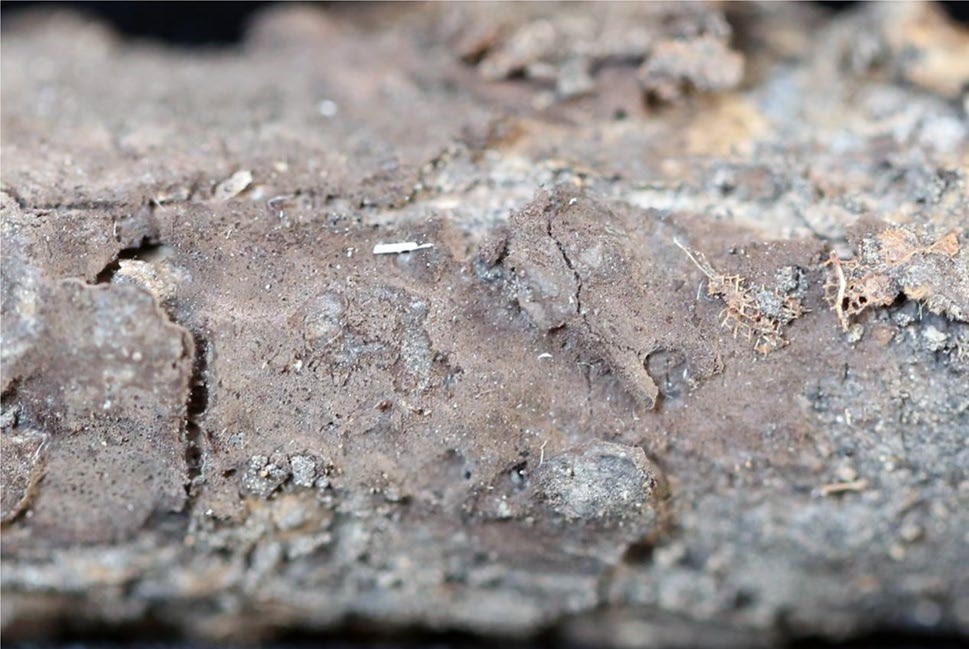
A basidiocarp of Tomentella griseofusca (IFP 019293, holotype)


